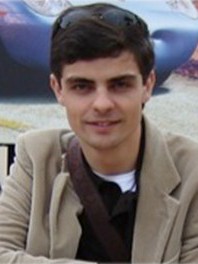resumo
In recent years, there has been an increasing interest in nitro fatty acids (NO2-FA) as signaling molecules formed under nitroxidative stress. NO2-FA were detected in vivo in a free form, although it is assumed that they may also be esterified to phospholipids (PL). Nevertheless, insufficient discussion about the nature, origin, or role of nitro phospholipids (NO2-PL) was reported up to now. The aim of this study was to develop a mass spectrometry (MS) based approach which allows identifying nitroalkenes derivatives of three major PL classes found in living systems: phosphatidylcholines (PCs), phosphatidylethanolamine (PEs), and phosphatidylserines (PSs). NO2-PLs were generated by NO2BF4 in hydrophobic environment, mimicking biological systems. The NO2-PLs were then detected by electrospray ionization (ESI-MS) and ESI-MS coupled to hydrophilic interaction liquid chromatography (HILIC). Identified NO2-PLs were further analyzed by tandem MS in positive (as [M + H](+) ions for all PL classes) and negative-ion mode (as [M - H](-) ions for PEs and PSs and [M + OAc](-) ions for PCs). Typical MS/MS fragmentation pattern of all NO2-PL included a neutral loss of HNO2, product ions arising from the combined loss of polar headgroup and HNO2, [NO2-FA + H](+) and [NO2-FA - H](-) product ions, and cleavages on the fatty acid backbone near the nitro group, allowing its localization within the FA akyl chain. Developed MS method was used to identify NO2-PL in cardiac mitochondria from a well-characterized animal model of type 1 diabetes mellitus. We identified nine NO2-PCs and one NO2-PE species. The physiological relevance of these findings is still unknown.
palavras-chave
LINOLEIC-ACID NITRATION; NITRIC-OXIDE; FATTY-ACIDS; ANTIINFLAMMATORY PROPERTIES; STRUCTURAL-CHARACTERIZATION; ELECTROSPRAY-IONIZATION; HUMAN BLOOD; OLEIC-ACID; FRAGMENTATION; PEROXYNITRITE
categoria
Chemistry
autores
Melo, T; Domingues, P; Ferreira, R; Milic, I; Fedorova, M; Santos, SM; Segundo, MA; Domingues, MRM
nossos autores
agradecimentos
Thanks are due to University of Aveiro, FCT/MEC, European Union, QREN, COMPETE for the financial support to the QOPNA Research Unit (FCT Grant UID/QUI/00062/2013) and UCIBIO Research Unit (Grant UID/Multi/04378/2013), through national funds and where applicable cofinanced by the FEDER, within the PT2020 Partnership Agreement, and also to the Portuguese Mass Spectrometry Network (Grant REDE/1504/REM/2005). Tania Melo (Grant SFRH/BD/84691/2012) is grateful to FCT for her grant. Financial support from the European Regional Development Fund (ERDF, European Union and Free State Saxony, EFRE; Grants 100146238 and 100121468 to M.F.), COST Action CM1001, and stipend to I.M. provided by Universitat Leipzig are gratefully acknowledged.


